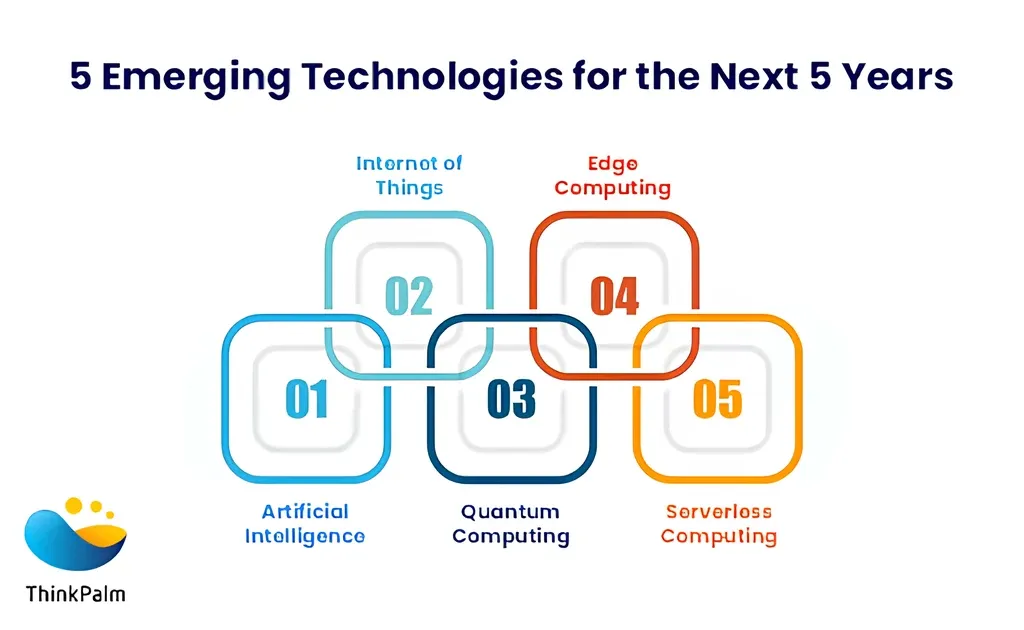In this article, you’ll learn:
Just look around: From sunrise to sunset, we’re all plugged into the digital age with software.
Whether it’s jumping into a client meeting via Zoom or Google Meet, clarifying doubts and sharing spicy gossip with colleagues over Slack, or finding similar Met Gala attire on Zara – everything is kept with us through software.
Maybe that’s why, in a 2021 podcast by Deloitte and Oracle, it was said: “SaaS is the future of software, and that future is now."
And, it’s not a hype – in fact, over 91% of organizations consider SaaS a key driver of emerging tech adoption.
So, let’s dive into the radar of thrilling SaaS trends for now and next decade, that will wave the SaaS market shortly!
Current State & Prediction for the Next Decade of SaaS
SaaS, Software as a service, everywhere left its foot mark to represent, how it can be used or what it can deliver to make every sector organized. In fact, if we see its market penetration, we’ll find no sign of slowing down ever.
And, this same we’ll gonna experience in today’s SaaS growth forecast through figures and facts:
- Fortune Business Insights states that with an average yearly compound rate of 18.4%, the SaaS market is expected to reach 1,228.87 billion by 2032 from USD 317.55 billion in 2024.
- Statisa’s prediction showcases that the SaaS segment is projected to generate US$818.80bn in revenue by 2029, with an annual growth rate of 19.28%.

- BCC Research reported that the BFSI (banking, financial services, and insurance) industry is predicted to contribute USD 130.7 billion, while the retail and e-commerce sectors will contribute USD 138.9 billion by 2027.
- And, most importantly, Gratners’ report stated that the worldwide users already spent around USD 167 million in 2022, which will reach approximately USD 232 million by 2024.
Prominent Factors that Shape SaaS Trends
To build a grip on tumultuous SaaS landscape and provide service more than just software, brands are now adapting important objective factors, which are as follows:
Customer Preferences
Today’s customers are adamant on their demand and expectations with any SaaS product. On one hand, they want an intimate SaaS business, on the other losing their satisfaction can make the business fragile.
Therefore, to fit the bill, SaaS businesses prioritize balancing frequency of new product launches, self-service capabilities, ease of feature upgrades, smooth customization and integration, and flexible pricing.
As SaaS platforms continue to evolve, many organizations also rely on Salesforce consulting services to streamline cloud adoption, improve scalability, and align technology with long-term business goals.
Market Competitiveness
Market giants like Salesforce, Zoho, and Adobe have solidified their positions, making the landscape tough for new SaaS products.
While the CRM category is saturated with an overwhelming number of products, other less crowded areas, such as API, text to speech voices or AI-based database models, still hold the potential to outshine the existing SaaS competition.
Technological Advancements
The future of SaaS brands’ growth depends on technical experimentation and adoption with the emerging technology like Generative AI IoT (Internet of Things), edge computing, and DevSecOps.

Along with that, prioritizing code integrity becomes another crucial factor so that they can turn their platform into a ready-made solution, standing against from-scratch applications for their customers.
This is absolutely essential because now every business wants their employees to do their jobs more efficiently and losing this grip can make any SaaS brand’s effort sink.
For instance, any type of brand can implement an engaging web design and insert an AI chatbot to drive a greater number of users on search engines, whereas a fleet management industry can go for a geo-fenced tracking solution.
Economic Conditions
It's needless to say to survive and stay competitive, every SaaS brand is adapting to uncertainties and operating model challenges. Whether a SaaS brand is ‘born in the cloud’ or transitioning to an 'as-a-service model', it delivers long-term value while ensuring its offering aligns with the cost of its solutions.
Evolving Regulatory Conditions
With the advancement of technology, the severity of cyber attacks, and concern over data sovereignty, it’s become obvious for SaaS brands to adapt security, ethics, and mandatory compliances. It’s because they want to focus on customer security first and make their platform trustworthy before proposing the offer.
5 Major SaaS Trends That Are Ruling In 2024
According to KPMG, more than 86% of organizations anticipate that around 80% of all their apps will be SaaS in upcoming years. So, let’s see what major SaaS trends will make the prediction right and will reshape the next decade from now on:
1. AI and Machine Learning Integration
The combination of Business Intelligence (BI), data-driven projection, and real-time analytics makes business breath and that comes along with integrating SaaS tools into the process.
Now, the SaaS brands can’t make it work without in-built AI and machine learning algorithms. From identifying patterns, deeply understanding graphics to psychology, and predicting upheavals in the market, AI-based SaaS tools save any business from a sudden fall.
For instance, if you see AI’s potential in the healthcare industry, you’ll find how it diagnoses X-rays and MRIs, detects anomalies in patients’ records, analyzes disease, and personalizes treatment plans. Most importantly, it saves healthcare professionals from productivity fluctuations and losses of lives.
2. Vertical SaaS Solution
Vertical SaaS is newer now to every user, which is extremely important in the SaaS growth forecast. Business professionals believe that each industry-specific application comes with an out-of-the-box solution that a generic app can’t.
For instance, any type of brand can implement an engaging web design and insert an AI chatbot to drive a greater number of users on search engines, whereas a fleet management industry can go for a geo-fenced tracking solution. And, a tourism sector can take facial recognition to robust security at every check-in point from airports to hotels and car rentals to restaurants.
All-in-all, vertical SaaS solutions became more appealing to businesses, as they can seed growth without complicating integration, customization, or plugins.
3. Enhanced Cybersecurity Measures
Well, Christopher’s words perfectly capture why measuring cybersecurity standards is significant.
And, the reality can’t be overshadowed by the fact that the rising threat of privacy breaches makes SaaS products imply advanced security factors. From multi-factor authentication to encryption, compliance with data protection ordinances such as GDPR, HIPAA, and CCPA, are non-negotiable for earning customers' trust.
For example, if a business wants to integrate a top-notch project management tool, as a customer, they expect the company to take responsibility for any security breaches, while the SaaS brand works to make it less vulnerable to cyber threats.
Therefore, SaaS products make it mandatory to lower product misconfiguration and enhance internal operations to close all the doors of cyberattacks.
4. Low-Code and No-Code Platforms
Low-code and no-code SaaS platforms are transforming the way businesses approach software. This SaaS trend especially attracted those who either aren't skilled in coding or have no time to create an unbreakable code. Interestingly, any business can now create customized applications without needing technical expertise by using a leading low-code app development platform such as Appsmith, Power Apps, Mendix, and Retool.
For instance, Zixflow CRM comes with drag-and-drop interfaces, custom forms, and other pre-built applications that are enough for any small to midsize industries to build a successful email outreach campaign.
As these platforms become more ignited, businesses are attracted to them very easily to make themselves agile and responsive according to the demanding market.
5. SaaS Ecosystem Expansion
To integrate digital advancement into business practices, the SaaS ecosystem is rapidly expanding with its strategic approaches. When the term ‘SaaS ecosystem’ refers to products themselves, it also encompasses a complex network of interconnected players—including customers, developers, and vendors—who together build sustainable relationships.
That’s why to make an impact on this innovative market, SaaS brands are investing in community engagement, strategic partnerships, marketplace presence, and continual improvement in their offerings.
Let’s Wrap Up!
Yeah, you heard it right, and all thanks go to the SaaS solution that designs the future of software as a service. Thus, the SaaS industry becomes an exciting venture with a wealth of innovation, collaboration, and opportunities.
Despite potential challenges, SaaS has insane potential to sharpen its success and curve it boldly to fit in 2024 and beyond.
Why not? After all, businesses and users' lives depend on it in every way!
Did you enjoy this article? Give Pics.io a try — or book a demo with us, and we'll be happy to answer any of your questions.
Archia Digital Marketing Manager at alttxt.com, possesses a wealth of expertise in crafting persuasive and impactful content for SaaS businesses. With an impressive track record spanning three years, she has consistently excelled in devising content strategies that deeply connect with the intended audience, resulting in increased website traffic and a steady flow of leads.




